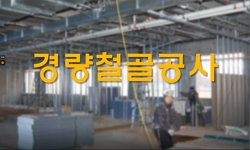본 연구는 건설 VE 기능분석 및 FAST 작성상의 문제점을 분석하여 효과적인 기능분석업무 수행방안과 이에 대한 전산도구를 구축하는 것을 목적으로 수행되었다. 그리고 이에 대한 해결방안...
http://chineseinput.net/에서 pinyin(병음)방식으로 중국어를 변환할 수 있습니다.
변환된 중국어를 복사하여 사용하시면 됩니다.
- 中文 을 입력하시려면 zhongwen을 입력하시고 space를누르시면됩니다.
- 北京 을 입력하시려면 beijing을 입력하시고 space를 누르시면 됩니다.
건설 VE 프로젝트에서 효과적인 FAST 적용방안 및 FAST 작성 전산모델 = (An)effective FAST application and computerized FAST diagramming model for construction VE projects
한글로보기https://www.riss.kr/link?id=T11053939
- 저자
-
발행사항
서울: 中央大學校, 2002
-
학위논문사항
학위논문(박사) -- 중앙대학교 대학원 , 건축학과 건축구조 및 시공전공 , 2002
-
발행연도
2002
-
작성언어
한국어
-
주제어
건설 ; 건축 ; 시공 ; VE ; 프로젝트 ; FAST ; COMPUTERIZED ; DIAGRAMMING ; CONSTRUCTION ; PROJECT
-
KDC
542 판사항(4)
-
DDC
692 판사항(21)
-
발행국(도시)
서울
-
형태사항
vii, 128장: 삽도; 26cm
- DOI식별코드
- 소장기관
-
0
상세조회 -
0
다운로드
부가정보
국문 초록 (Abstract)
연구의 주요 결과는 다음과 같다.
1) 건설 VE 기능분석 및 FAST의 문제점
기능분석의 문제점을 정리하면, 첫째, 기능분석의 각 절차(기능정의-분류-정리-평가) 및 후속 과정인 아이디어 창출단계가 상호 연계되지 못하고 있다. 둘째, 국내 건설 VE에서 FAST는 대상이해의 목적보다는 개선대상을 선정하는 중간과정으로 간주되고 있으며 FAST 작성방법과 FAST의 실효성은 실무상에 적절히 반영되지 못하고 있는 것으로 나타났다. 셋째, 현행 기능분석절차는 건설 VE 대상의 다양한 특성을 반영하기 어려운 측면이 있다. 마지막으로 건설 VE의 시간적 제약, VE팀원의 훈련 및 경험 부족, 인식 부족, 그리고 각종 정량적 데이터의 부족 등이 언급한 문제와 복합적으로 작용하여 현행 기능분석업무는 VE 이론의 핵심임에도 불구하고 VE 실무에서 그 중요성이 오랫동안 간과되어 왔다.
2) FAST 적용방안
본 연구는 이러한 기능분석의 제반 문제를 해결하기 위해 FAST를 중심으로 기능분석업무를 수행할 수 있는 개념 및 방안을 제시하였다. 본 방안은 기능분석 대상인 프로젝트, 공간, 부위, 요소에 따라 달리 적용될 수 있는 것으로 이때 Easy-FAST는 VE팀원의 효율적인 FAST 작성 전산도구가 될 수 있다. 활용 FAST 중에서 Function Hierarchy Model은 개선대상을 선정하기 위한 도구로 활용되며, 선정된 대상의 구체적 이해와 아이디어 창출은 Technical FAST를 통해 이루어진다. 프로젝트 단위의 경우 Technical FAST만을 적용하도록 하였으며, 공간, 부위, 요소단위의 경우 Function Hierarchy Model과 Technical FAST의 2단계의 방안이 적용된다. 그리고 각 대상별 FAST 적용방안의 적정성을 검토하기 위해 VE 전문가에 의한 대상별 사례연구를 수행하여 본 방안이 충분히 적용될 수 있음을 입증하였다.
3) Easy-FAST 구축
FAST 적용방안을 건설 VE실무에서 효과적으로 적용하기 위해 본 연구에서는 FAST 작성을 전산화하기 위한 Easy-FAST 모델을 제시하고 그 내부에 Function Hierarchy Model과 Technical FAST를 작성하기 위한 구체적 개념을 마련하였다. 그리고 이에 따라 공정관리 소프트웨어인 MS 프로젝트 2000을 활용하여 Easy-FAST를 구축하였다.
구축된 Easy-FAST는 크게 FHM 모듈과 TF 모듈로 구성되어 있으며, 각 모듈은 기능작업시트와 FAST 다이어그램 부문으로 나뉘어져 있다. 본 Easy-FAST는 CPM 네트워크 다이어그램 작성개념을 FAST 작성에 도입하여 기존의 FAST 작성에서 가장 어려운 부분 중의 하나였던 How-Why 논리의 추론을 선행기능의 고유 번호(ID)입력으로 대체하여 건설 실무자가 쉽게 활용하도록 하였다.
또한 기능작업시트를 통해 기능분석의 모든 업무를 통합하여 업무의 집중도를 높였으며, 본 시트의 작성과 수정을 통해 쉽게 기능이 정리되도록 하였다. FAST 다이어그램 박스는 종래의 기능정의부만 표현되던 것을 개선하여 기능정의, 기능유형, 비용평가 자료 등을 모두 수록할 수가 있어 정보의 가시성 측면을 높인 장점을 가지고 있다. 그리고 VE팀원이 MS Access에 축적된 기능정보 데이터를 쉽게 검색할 수 있도록 인터페이스 프로그램을 개발하여 기능정의업무의 효율성을 증진토록 하였다.
그리고 Easy-FAST의 효용성을 검토하기 위해 VE 전문가를 대상으로 면담조사를 수행하였다. 그 결과 전반적으로 긍정적인 검토의견을 얻었으며, 특히 VE활동의 시간적 제약과 FAST 작성 어려움을 상당부분 해결하였으며, 아이디어 창출단계와의 연계 가능성도 높인 것으로 검토되었다. 반면에 기능정의와 기능평가 부문은 후속 연구를 수행해야 할 것으로 조사되었다.
본 연구의 FAST 적용방안 및 Easy-FAST는 제기한 기능분석의 문제들 가운데 특정 부분만을 해결한 것이지만 기타 문제 해결의 시작점이 될 수 있다. 특히, Easy-FAST는 간단한 원리와 구조를 가지면서도 실무에 매우 효과적으로 활용될 수 있는 장점을 가지고 있다. 하지만 이와 같은 연구결과가 VE실무에서 적절히 활용되기 위해서는 건설 VE실무자의 VE에 대한 근본 개념의 확실한 이해와 긍정적이고, 열린 사고의 전환이 뒷받침되어야 한다. 또한 건설 VE실무 사례를 통해 얻은 각종 교훈(Lesson Learned) 및 연구결과가 지속적으로 제시되어야 만이 국내 건설 VE의 이론과 실무가 함께 발전될 수가 있다.
본 연구는 건설 VE 기능분석 및 FAST 작성상의 문제점을 분석하여 효과적인 기능분석업무 수행방안과 이에 대한 전산도구를 구축하는 것을 목적으로 수행되었다. 그리고 이에 대한 해결방안으로 건설 VE 기능분석업무에 효과적인 FAST 적용방안과 이때 효율적으로 활용될 수 있는 FAST 작성 전산모델인 Easy-FAST 를 제안하였으며, 전문가 면담 및 사례연구를 통해 그 유용성을 입증하였다.
연구의 주요 결과는 다음과 같다.
1) 건설 VE 기능분석 및 FAST의 문제점
기능분석의 문제점을 정리하면, 첫째, 기능분석의 각 절차(기능정의-분류-정리-평가) 및 후속 과정인 아이디어 창출단계가 상호 연계되지 못하고 있다. 둘째, 국내 건설 VE에서 FAST는 대상이해의 목적보다는 개선대상을 선정하는 중간과정으로 간주되고 있으며 FAST 작성방법과 FAST의 실효성은 실무상에 적절히 반영되지 못하고 있는 것으로 나타났다. 셋째, 현행 기능분석절차는 건설 VE 대상의 다양한 특성을 반영하기 어려운 측면이 있다. 마지막으로 건설 VE의 시간적 제약, VE팀원의 훈련 및 경험 부족, 인식 부족, 그리고 각종 정량적 데이터의 부족 등이 언급한 문제와 복합적으로 작용하여 현행 기능분석업무는 VE 이론의 핵심임에도 불구하고 VE 실무에서 그 중요성이 오랫동안 간과되어 왔다.
2) FAST 적용방안
본 연구는 이러한 기능분석의 제반 문제를 해결하기 위해 FAST를 중심으로 기능분석업무를 수행할 수 있는 개념 및 방안을 제시하였다. 본 방안은 기능분석 대상인 프로젝트, 공간, 부위, 요소에 따라 달리 적용될 수 있는 것으로 이때 Easy-FAST는 VE팀원의 효율적인 FAST 작성 전산도구가 될 수 있다. 활용 FAST 중에서 Function Hierarchy Model은 개선대상을 선정하기 위한 도구로 활용되며, 선정된 대상의 구체적 이해와 아이디어 창출은 Technical FAST를 통해 이루어진다. 프로젝트 단위의 경우 Technical FAST만을 적용하도록 하였으며, 공간, 부위, 요소단위의 경우 Function Hierarchy Model과 Technical FAST의 2단계의 방안이 적용된다. 그리고 각 대상별 FAST 적용방안의 적정성을 검토하기 위해 VE 전문가에 의한 대상별 사례연구를 수행하여 본 방안이 충분히 적용될 수 있음을 입증하였다.
3) Easy-FAST 구축
FAST 적용방안을 건설 VE실무에서 효과적으로 적용하기 위해 본 연구에서는 FAST 작성을 전산화하기 위한 Easy-FAST 모델을 제시하고 그 내부에 Function Hierarchy Model과 Technical FAST를 작성하기 위한 구체적 개념을 마련하였다. 그리고 이에 따라 공정관리 소프트웨어인 MS 프로젝트 2000을 활용하여 Easy-FAST를 구축하였다.
구축된 Easy-FAST는 크게 FHM 모듈과 TF 모듈로 구성되어 있으며, 각 모듈은 기능작업시트와 FAST 다이어그램 부문으로 나뉘어져 있다. 본 Easy-FAST는 CPM 네트워크 다이어그램 작성개념을 FAST 작성에 도입하여 기존의 FAST 작성에서 가장 어려운 부분 중의 하나였던 How-Why 논리의 추론을 선행기능의 고유 번호(ID)입력으로 대체하여 건설 실무자가 쉽게 활용하도록 하였다.
또한 기능작업시트를 통해 기능분석의 모든 업무를 통합하여 업무의 집중도를 높였으며, 본 시트의 작성과 수정을 통해 쉽게 기능이 정리되도록 하였다. FAST 다이어그램 박스는 종래의 기능정의부만 표현되던 것을 개선하여 기능정의, 기능유형, 비용평가 자료 등을 모두 수록할 수가 있어 정보의 가시성 측면을 높인 장점을 가지고 있다. 그리고 VE팀원이 MS Access에 축적된 기능정보 데이터를 쉽게 검색할 수 있도록 인터페이스 프로그램을 개발하여 기능정의업무의 효율성을 증진토록 하였다.
그리고 Easy-FAST의 효용성을 검토하기 위해 VE 전문가를 대상으로 면담조사를 수행하였다. 그 결과 전반적으로 긍정적인 검토의견을 얻었으며, 특히 VE활동의 시간적 제약과 FAST 작성 어려움을 상당부분 해결하였으며, 아이디어 창출단계와의 연계 가능성도 높인 것으로 검토되었다. 반면에 기능정의와 기능평가 부문은 후속 연구를 수행해야 할 것으로 조사되었다.
본 연구의 FAST 적용방안 및 Easy-FAST는 제기한 기능분석의 문제들 가운데 특정 부분만을 해결한 것이지만 기타 문제 해결의 시작점이 될 수 있다. 특히, Easy-FAST는 간단한 원리와 구조를 가지면서도 실무에 매우 효과적으로 활용될 수 있는 장점을 가지고 있다. 하지만 이와 같은 연구결과가 VE실무에서 적절히 활용되기 위해서는 건설 VE실무자의 VE에 대한 근본 개념의 확실한 이해와 긍정적이고, 열린 사고의 전환이 뒷받침되어야 한다. 또한 건설 VE실무 사례를 통해 얻은 각종 교훈(Lesson Learned) 및 연구결과가 지속적으로 제시되어야 만이 국내 건설 VE의 이론과 실무가 함께 발전될 수가 있다.
다국어 초록 (Multilingual Abstract)
This study aims to suggest an FAST application method and to develop a computerized FAST diagramming model, called Easy-FAST, by using a scheduling software for the efficient and effective FAST application on construction VE projects. It is expected that the method and the Easy-FAST overcome the current problems on function analysis in construction VE practices. In doing so, an extended review and analysis of literatures related to the FAST are performed to investigate the trends of function analysis (focused on FAST) and the nature of its problems in the construction applications. The usefulness of the method and Easy-FAST was validated through case study and interview with experts.
The results of the study are the following:
1) The problems of function analysis and FAST
The current trend of VE practices and its application problems were investigated through extensive literature survey and review on this subject. In the aspects of function analysis and FAST, the current problems in practices are the following: 1) lack of basic understanding of the function analysis as problem solving technique, 2) the sequential step-by-step analysis process, 3) lack of interrelationship between function analysis and creative phase, 4) VE practitioner focus on finding poor value functions rather than understanding the critical functions, 4) lack of time, experience, training, quantitative data and resulting improper FAST diagram, 5) defining functions without considering FAST diagram at the beginning and resulting later redefinition of function. 6) the FAST diagramming procedure and method are too abstract and complex to be used efficiently in VE practices.
The existing function analysis methodology is faultless theoretically. However, it is not enough for efficient use in practice. Thus, the current procedure and method of function analysis should be simplified for the effective application.
2) The Method for the Effective FAST application
In order to solve the current problems, the study proposes the method for the effective FAST application. The method suggests various approaches in terms of four levels- project, spaces, elements, and components, the levels at which function analysis may take place during project life cycle. Easy-FAST is utilized for the efficient FAST diagramming tool.
Function Hierarchy Model(FHM) is utilized for finding poor value functions. In order to understand the functions deeply and create the new idea, Technical FAST(TF) is applied. In the project level, the proposed method suggests a function analysis approach by only TF diagramming. In another levels(spaces, elements, and components), the method proposes two step approach by FHM and TF diagramming. And the method was successfully implemented and validated with various types of case studies with VE experts.
3) Easy-FAST Model
Critical restriction in applying the method for the effective FAST application comes from the fact that manual diagramming practice affects the time-limited VE activities. With this perception, one can insist that the effort on the efficient FAST application in construction VE practices be directed toward simplification of FAST diagramming process through computerization.
This study is initiated with the fact that the concept of the FAST diagramming is originated from CPM(Critical Path Method) networking concept and with the belief that the networking logic might be applied for solve some problems concerning FAST application. The study presents a prototype of computerized FAST diagramming model, called Easy-FAST, by using MS Project 2000, a CPM software. And the study also suggests its FAST diagramming method and procedure.
The overall structure of Easy-FAST is formed with several modules- FHM module, TF Modules, database module. Each module consists of function worksheet and FAST diagram box. FAST diagram is generated by simply entering function ID number(s) that represent preceding relations between functions. The diagram can be modified through adjusting the relations of preceding functions or re-classifying function type on the function work sheet. The function information generated by this model is stored in function database for future VE study. The database is designed with special breakdown structure that is classified and coded according to project, space and element, element and component. The study develops function definition database module by using MS Access and MS Visual 6.0.
It is expected that the Easy-FAST and its diagramming procedure can greatly improve the time-consuming diagramming practice by enabling concentration on function analysis and enhancing time-limited VE activities. The usefulness of the Easy-FAST was validated with interview with VE experts.
Though the Easy-FAST improves some of the current FAST diagramming process, the difficulty of function evaluation such as the calculation of present cost, function cost remains unsolved. In order to be a complete function analysis tool for construction VE projects, the Easy-FAST should be integrate with a specially designed estimation tool for the function costing.
In VE(Value Engineering) process, function analysis technique is utilized as a stepping stone to induce creative idea. FAST(Function Analysis System Technique) is a popular and well recognized tool and its usefulness and effectiveness have been proven...
In VE(Value Engineering) process, function analysis technique is utilized as a stepping stone to induce creative idea. FAST(Function Analysis System Technique) is a popular and well recognized tool and its usefulness and effectiveness have been proven through the history of VE in VE practices. However, function analysis and FAST diagramming is regarded as the most difficult job for VE team to undertake. For this reason, the function analysis is not properly applied or even omitted in construction VE studies.
This study aims to suggest an FAST application method and to develop a computerized FAST diagramming model, called Easy-FAST, by using a scheduling software for the efficient and effective FAST application on construction VE projects. It is expected that the method and the Easy-FAST overcome the current problems on function analysis in construction VE practices. In doing so, an extended review and analysis of literatures related to the FAST are performed to investigate the trends of function analysis (focused on FAST) and the nature of its problems in the construction applications. The usefulness of the method and Easy-FAST was validated through case study and interview with experts.
The results of the study are the following:
1) The problems of function analysis and FAST
The current trend of VE practices and its application problems were investigated through extensive literature survey and review on this subject. In the aspects of function analysis and FAST, the current problems in practices are the following: 1) lack of basic understanding of the function analysis as problem solving technique, 2) the sequential step-by-step analysis process, 3) lack of interrelationship between function analysis and creative phase, 4) VE practitioner focus on finding poor value functions rather than understanding the critical functions, 4) lack of time, experience, training, quantitative data and resulting improper FAST diagram, 5) defining functions without considering FAST diagram at the beginning and resulting later redefinition of function. 6) the FAST diagramming procedure and method are too abstract and complex to be used efficiently in VE practices.
The existing function analysis methodology is faultless theoretically. However, it is not enough for efficient use in practice. Thus, the current procedure and method of function analysis should be simplified for the effective application.
2) The Method for the Effective FAST application
In order to solve the current problems, the study proposes the method for the effective FAST application. The method suggests various approaches in terms of four levels- project, spaces, elements, and components, the levels at which function analysis may take place during project life cycle. Easy-FAST is utilized for the efficient FAST diagramming tool.
Function Hierarchy Model(FHM) is utilized for finding poor value functions. In order to understand the functions deeply and create the new idea, Technical FAST(TF) is applied. In the project level, the proposed method suggests a function analysis approach by only TF diagramming. In another levels(spaces, elements, and components), the method proposes two step approach by FHM and TF diagramming. And the method was successfully implemented and validated with various types of case studies with VE experts.
3) Easy-FAST Model
Critical restriction in applying the method for the effective FAST application comes from the fact that manual diagramming practice affects the time-limited VE activities. With this perception, one can insist that the effort on the efficient FAST application in construction VE practices be directed toward simplification of FAST diagramming process through computerization.
This study is initiated with the fact that the concept of the FAST diagramming is originated from CPM(Critical Path Method) networking concept and with the belief that the networking logic might be applied for solve some problems concerning FAST application. The study presents a prototype of computerized FAST diagramming model, called Easy-FAST, by using MS Project 2000, a CPM software. And the study also suggests its FAST diagramming method and procedure.
The overall structure of Easy-FAST is formed with several modules- FHM module, TF Modules, database module. Each module consists of function worksheet and FAST diagram box. FAST diagram is generated by simply entering function ID number(s) that represent preceding relations between functions. The diagram can be modified through adjusting the relations of preceding functions or re-classifying function type on the function work sheet. The function information generated by this model is stored in function database for future VE study. The database is designed with special breakdown structure that is classified and coded according to project, space and element, element and component. The study develops function definition database module by using MS Access and MS Visual 6.0.
It is expected that the Easy-FAST and its diagramming procedure can greatly improve the time-consuming diagramming practice by enabling concentration on function analysis and enhancing time-limited VE activities. The usefulness of the Easy-FAST was validated with interview with VE experts.
Though the Easy-FAST improves some of the current FAST diagramming process, the difficulty of function evaluation such as the calculation of present cost, function cost remains unsolved. In order to be a complete function analysis tool for construction VE projects, the Easy-FAST should be integrate with a specially designed estimation tool for the function costing.
목차 (Table of Contents)
- 목차 = i
- 표목차 = iv
- 그림목차 = v
- 1 서론 = 1
- 1.1 연구의 배경 및 목적 = 1
- 목차 = i
- 표목차 = iv
- 그림목차 = v
- 1 서론 = 1
- 1.1 연구의 배경 및 목적 = 1
- 1.2 연구의 범위 및 방법 = 3
- 1.2.1 연구의 범위 = 3
- 1.2.2 연구의 내용 및 방법 = 5
- 1.3 연구동향 = 7
- 1.3.1 국외 = 7
- 1.3.2 국내 = 10
- 1.3.3 분석종합 = 12
- 2 건설 VE 이론의 고찰 = 14
- 2.1 건설 .VE = 14
- 2.1.1 개념 및 정의 = 14
- 2.1.2 VE 프로세스 = 15
- 2.2 기능분석 = 18
- 2.2.1 기능정의 및 분류 = 19
- 2.2.2 기능정리 및 평가 = 20
- 2.2.3 추론사다리 = 21
- 2.3 FAST = 22
- 2.3.1 FAST 일반 = 23
- 2.3.2 전통적인 FAST = 25
- 2.3.3 기술적인 FAST = 27
- 2.3.4 Mudge의 FAST = 28
- 2.3.5 발주청 중심의 FAST와 기능계통도 = 29
- 2.3.6 FAST의 유형별 특징 = 32
- 2.4 건설 VE 기능분석의 문제점 = 37
- 3 건설 VE 대상별 FAST 적용 개념 및 방안 = 40
- 3.1 건설 VE의 기능분석 대상 = 40
- 3.1.1 건설 생산 프로세스와 VE 대상 = 40
- 3.1.2 VE 대상에 따른 기능분석활동의 특징 = 43
- 3.2 건설 VE 기능분석에 효과적 FAST 적용을 위한 모델 = 46
- 3.2 1 모델 개념 및 프로세스 = 46
- 3.2.2 Function Hierarchy Model을 활용한 개선대상 선정의 개념 = 48
- 3.3 대상별 fast 적용방안 및 사례연구 = 50
- 3.3.1 프로젝트 단위 = 51
- 3.3.2 공간 단위 = 52
- 3.3.3 부위/요소 단위 = 56
- 3.4 FAST 작성 전산도구 구축을 위한 고려사항 = 59
- 4 Easy-FAST 모델 = 61
- 4.1 Easy-FAST 개념 = 61
- 4.1.1 CPM 네트워크 작성 개념과 FAST 다이어그램과의 연계 방안 = 62
- 4.1.2 Easy-FAST 의 구성 = 63
- 4.1.3 Easy-FAST 데이터베이스 구조 = 65
- 4.2 Function Hierarchy Model의 부문 = 69
- 4.2.1 Function Hierarchy Model 구성 및 활용정보 = 69
- 4.2.2 Function Hierarchy Model 작성 개념 및 절차 = 71
- 4.3 Technical FAST의 작성 개념 및 절차 = 74
- 5 Easy-FAST 실행 = 79
- 5.1 개발환경 및 적용 프로그램 = 79
- 5.2 MS 프로젝트 2000의 응용 = 80
- 5.2.1 기능작업시트 = 81
- 5.2.2 FAST 다이어그램 박스 = 82
- 5.2.3 데이터베이스를 통한 기능정의 정보 검색 및 기타 기능 = 83
- 5.3 Easy-FAST 실행 결과 = 83
- 5.3.1 FHM 모듈 = 84
- 5.3.2 TF 모듈 = 86
- 5.3.3 FAST 다이어그램 출력 = 89
- 5.3.4 기능정의 정보검색을 위한 인터페이스 프로그램 = 90
- 5.4 제약사항 = 91
- 5.5 Easy-FAST의 효용성 검토 = 91
- 6 결론 및 향후 연구방향 = 95
- 참고문헌 = 99
- 부록 = 103
- A: 면담조사지 = 104
- B: Easy-FAST로 작성된 기능분석결과 출력물 = 109
- 초록 = 123
- Abstract = 126












